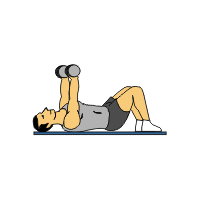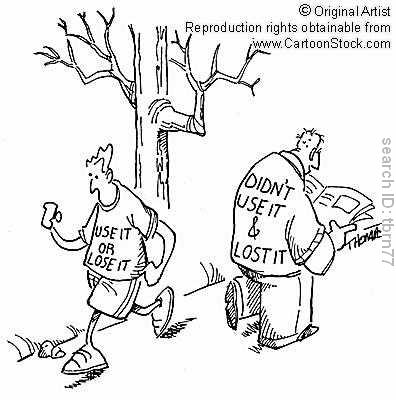Connectivism and Social Learning in Practice
Exploring various instructional strategies is crucial in meeting the needs of all of my learners in my classroom. Through my coursework this week I found many ways to integrate cooperative learning as an instructional strategy that aligns with social learning theories. Likewise, tying in technology at the same time allows me to engage my students on a 21st learning level. “To be prepared for the fast-paced, virtual workplace that they will inherit, today’s students needs to be able to learn and produce cooperatively” (Pitler, H., Hubbell, E., Kuhn, M., & Malenoski, K. 2007).
Students can do this specifically through a web tool known as Voice Thread. Voice Thread allows learners to conduct learning through creative projects. This tool enables them to upload images, add their voice, type text, create their own pictures and more. This can be incorporated in many areas of curriculum, to which I am currently creating my own Voice Thread that would be applicable in a physical education setting. (Laureate 2009)
Social learning does not have to be limited to the social interaction taking place between students in the physical presence of one another. Cooperative learning has taken a 21st century turn and I am excited by where it is going, and where we can take our students.
Laureate Education, Inc. (Producer). 2009. Spotlight on Technology.[Motion picture]. Bridging Learning Theory, Instruction, and Technology. Baltimore: Author
Pitler, H., Hubbell, E., Kuhn, M., & Malenoski, K. (2007). Using technology with classroom instruction that works. Alexandria, VA: ASCD.
Wednesday, March 31, 2010
Wednesday, March 24, 2010
Constructivism in Practice
Constructivism is supported by the fact that “integrating technology into instruction tends to move classrooms from teacher-dominated environments to ones that are more student-centered.”(Pitler, H., Hubbell, E., Kuhn, M., & Malenoski, K. 2007) Likewise, “project based learning is an instructional approach built upon authentic learning activities that engage student interests and motivation.” (Project Based Learning 2009) My goal as a high school physical education teacher is to accomplish both of these simultaneously.
At the beginning of each semester I begin my entry level PE classes with helping students gain confidence in their classmates and themselves because they may be meeting each other for the first time. I do this through physical activities such as trust falls, human knots and other problem solving activities. These procedures allow students time to get to know each other before they will begin competing in organized sports both with and against each other. My thoughts, since beginning this degree and learning more about principles of cognitive learning theory is that I could do this, but also take it one step further and incorporate technology. 21st century students such as mine would love to video these activities and turn it into a video clip. They enjoy youtube and podcasts and this would promote “students working together toward a common goal” which is what project based learning is. (Project Based Learning 2009)
(2009, March 21). Project Based Learning. Retrieved from http://pbl-online.org/About/whatisPBL.htm.
Pitler, H., Hubbell, E., Kuhn, M., & Malenoski, K. (2007). Using technology with classroom instruction that works. Alexandria, VA: ASCD
Constructivism is supported by the fact that “integrating technology into instruction tends to move classrooms from teacher-dominated environments to ones that are more student-centered.”(Pitler, H., Hubbell, E., Kuhn, M., & Malenoski, K. 2007) Likewise, “project based learning is an instructional approach built upon authentic learning activities that engage student interests and motivation.” (Project Based Learning 2009) My goal as a high school physical education teacher is to accomplish both of these simultaneously.
At the beginning of each semester I begin my entry level PE classes with helping students gain confidence in their classmates and themselves because they may be meeting each other for the first time. I do this through physical activities such as trust falls, human knots and other problem solving activities. These procedures allow students time to get to know each other before they will begin competing in organized sports both with and against each other. My thoughts, since beginning this degree and learning more about principles of cognitive learning theory is that I could do this, but also take it one step further and incorporate technology. 21st century students such as mine would love to video these activities and turn it into a video clip. They enjoy youtube and podcasts and this would promote “students working together toward a common goal” which is what project based learning is. (Project Based Learning 2009)
(2009, March 21). Project Based Learning. Retrieved from http://pbl-online.org/About/whatisPBL.htm.
Pitler, H., Hubbell, E., Kuhn, M., & Malenoski, K. (2007). Using technology with classroom instruction that works. Alexandria, VA: ASCD
Sunday, March 21, 2010
Cognitivism in Practice
As a physical education teacher, I understand the adversities students face in various learning environments. This week I was introduced to several concepts that can enhance my students cognitive learning to process information and store for a long period of time. Note-taking should be designed to effectively aide in student learning. Although this is not something I have a great deal of practice with, I did value in creating a concept map for my students. Concept maps are great for taking an idea and breaking it down into several smaller ideas to organize and process information. I can do this on many different sport units, as well as individual competitions. "Concept maps are graphical tools for organizing and representing knowledge" (Novak 2008). Like the high school students that I now teach I see the significance of "learning how to learn" because for some it does not come naturally. These cognitive, 21st century tools would have greatly benefited me in my undergraduate studies had someone taken the time with me to teach me these skills.
Novak, J. D. & Cañas, A. J. (2008). The theory underlying concept maps and how to construct and use them, Technical Report IHMC CmapTools 2006-01 Rev 01-2008. Retrieved from the Institute for Human and Machine Cognition Web site: http://cmap.ihmc.us/Publications/ResearchPapers/TheoryUnderlyingConceptMaps.pdf
As a physical education teacher, I understand the adversities students face in various learning environments. This week I was introduced to several concepts that can enhance my students cognitive learning to process information and store for a long period of time. Note-taking should be designed to effectively aide in student learning. Although this is not something I have a great deal of practice with, I did value in creating a concept map for my students. Concept maps are great for taking an idea and breaking it down into several smaller ideas to organize and process information. I can do this on many different sport units, as well as individual competitions. "Concept maps are graphical tools for organizing and representing knowledge" (Novak 2008). Like the high school students that I now teach I see the significance of "learning how to learn" because for some it does not come naturally. These cognitive, 21st century tools would have greatly benefited me in my undergraduate studies had someone taken the time with me to teach me these skills.
Novak, J. D. & Cañas, A. J. (2008). The theory underlying concept maps and how to construct and use them, Technical Report IHMC CmapTools 2006-01 Rev 01-2008. Retrieved from the Institute for Human and Machine Cognition Web site: http://cmap.ihmc.us/Publications/ResearchPapers/TheoryUnderlyingConceptMaps.pdf
Wednesday, March 10, 2010
How do instructional strategies correlate with behaviorist learning theories, especially when it comes to tying in technology?
Two strategies that I reviewed this week in my coursework for my master’s degree (Integrating Technology into the Classroom) are supported by principles of behaviorist learning theory. “According to behaviorists, the learner acquires behaviors , skills, and knowledge in response to the rewards , punishments, or withheld responses associated with them” (Lever-Duffy, J. & McDonald, J. 2008).
Reinforcing effort in student performance can be linked with technology as easily as using data collection tools in the classroom. “A powerful way to convince students that effort is truly tied to achievement is to show them data—not just data on themselves, but also combined data groups that they associate themselves with” (Pitler, H., Hubbell, E., Kuhn, M., & Malenoski, K. 2007). Using online tools and electronic devices students can gage their own progress and see how effort effects achievement. This is something I can do in a physical education setting. Students who work out in the weight room and log their reps, along with their body mass can soon associate their workout efforts with the physical changes in their bodies.
Using homework and practice, is also another behaviorist approach that can affect learning. Web resources are one strategy that can be carried over into the classroom. At an early childhood setting students can use games in a tutorial setting to reinforce the learning that is taking place in their classrooms. This could be applied to my older physical education students by using technology applicable to them such as blogs, and podcasts. Students are accessorized with various electronic devices in the high school setting and could easily access information through these.
Lever-Duffy, J. & McDonald, J. (2008). Theoretical Foundations (Laureate Education, Inc., custom ed.). Boston, MA: Pearson Education, Inc.
Pitler, H., Hubbell, E., Kuhn, M., & Malenoski, K. (2007). Using technology with classroom instruction that works. Alexandria, VA: ASCD.
Reinforcing effort in student performance can be linked with technology as easily as using data collection tools in the classroom. “A powerful way to convince students that effort is truly tied to achievement is to show them data—not just data on themselves, but also combined data groups that they associate themselves with” (Pitler, H., Hubbell, E., Kuhn, M., & Malenoski, K. 2007). Using online tools and electronic devices students can gage their own progress and see how effort effects achievement. This is something I can do in a physical education setting. Students who work out in the weight room and log their reps, along with their body mass can soon associate their workout efforts with the physical changes in their bodies.
Using homework and practice, is also another behaviorist approach that can affect learning. Web resources are one strategy that can be carried over into the classroom. At an early childhood setting students can use games in a tutorial setting to reinforce the learning that is taking place in their classrooms. This could be applied to my older physical education students by using technology applicable to them such as blogs, and podcasts. Students are accessorized with various electronic devices in the high school setting and could easily access information through these.
Lever-Duffy, J. & McDonald, J. (2008). Theoretical Foundations (Laureate Education, Inc., custom ed.). Boston, MA: Pearson Education, Inc.
Pitler, H., Hubbell, E., Kuhn, M., & Malenoski, K. (2007). Using technology with classroom instruction that works. Alexandria, VA: ASCD.
Subscribe to:
Comments (Atom)

